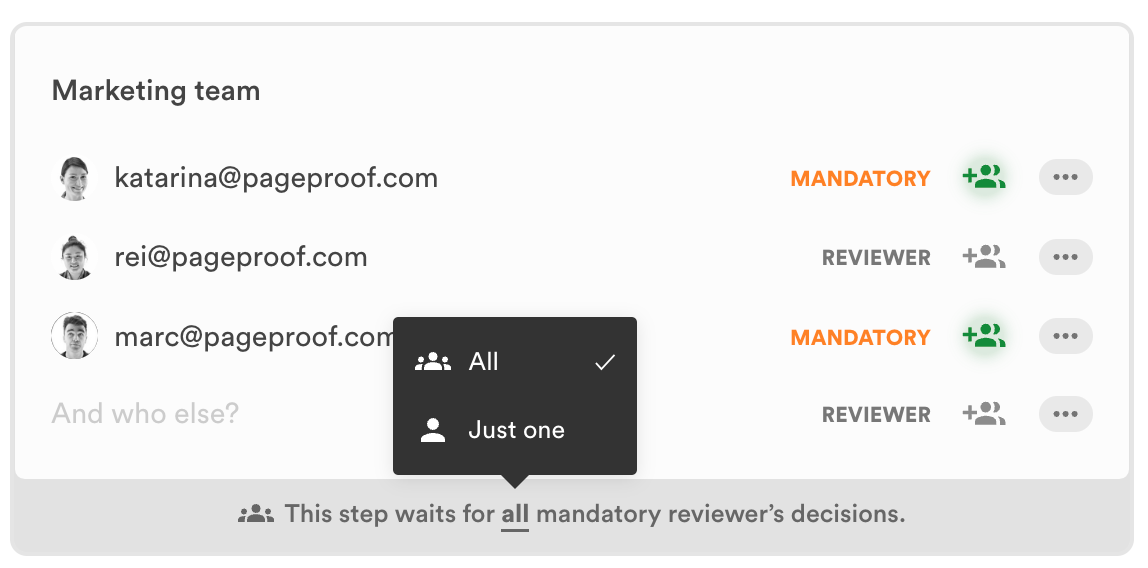Wouldn’t it be nice to control when proofers are invited onto a proof? Make sure key collaborators must cast their eyes over your work? Workflows give you this control and flexibility to reflect the way you really work.
Powerful approval workflows
When you upload a file to PageProof where you are asking for feedback from more than one reviewer, you will discover a workflow – a workflow is made up of multiple steps that contain reviewers, and of course a final approver step. You can assign reviewers different permission roles, the most common elevated permission role being a ‘mandatory’ reviewer.
If you name your workflow, it will be saved for you to use again later (and even share with your team). PageProof won’t invite a reviewing group to your proof until all the mandatory reviewers in the preceding proofing group have cast their eyes on the proof.
Mandatory reviewers: essential stakeholders in the proofing process
Making a reviewer mandatory means the proof will wait at that workflow step until that reviewer has finished their review of the proof. A workflow step can have as many mandatory reviewers as you like – but remember that the more mandatory reviewers you have, the longer the proof will take to travel through the approval workflow. Of course, you can always set whether all the mandatory reviewer decisions are required before the proof moves on, or just one is needed, the choice is yours. There are plenty of options when setting up workflows to match your creative approval process.

Check out what actions you can take in this article if your proof deadline is looming.